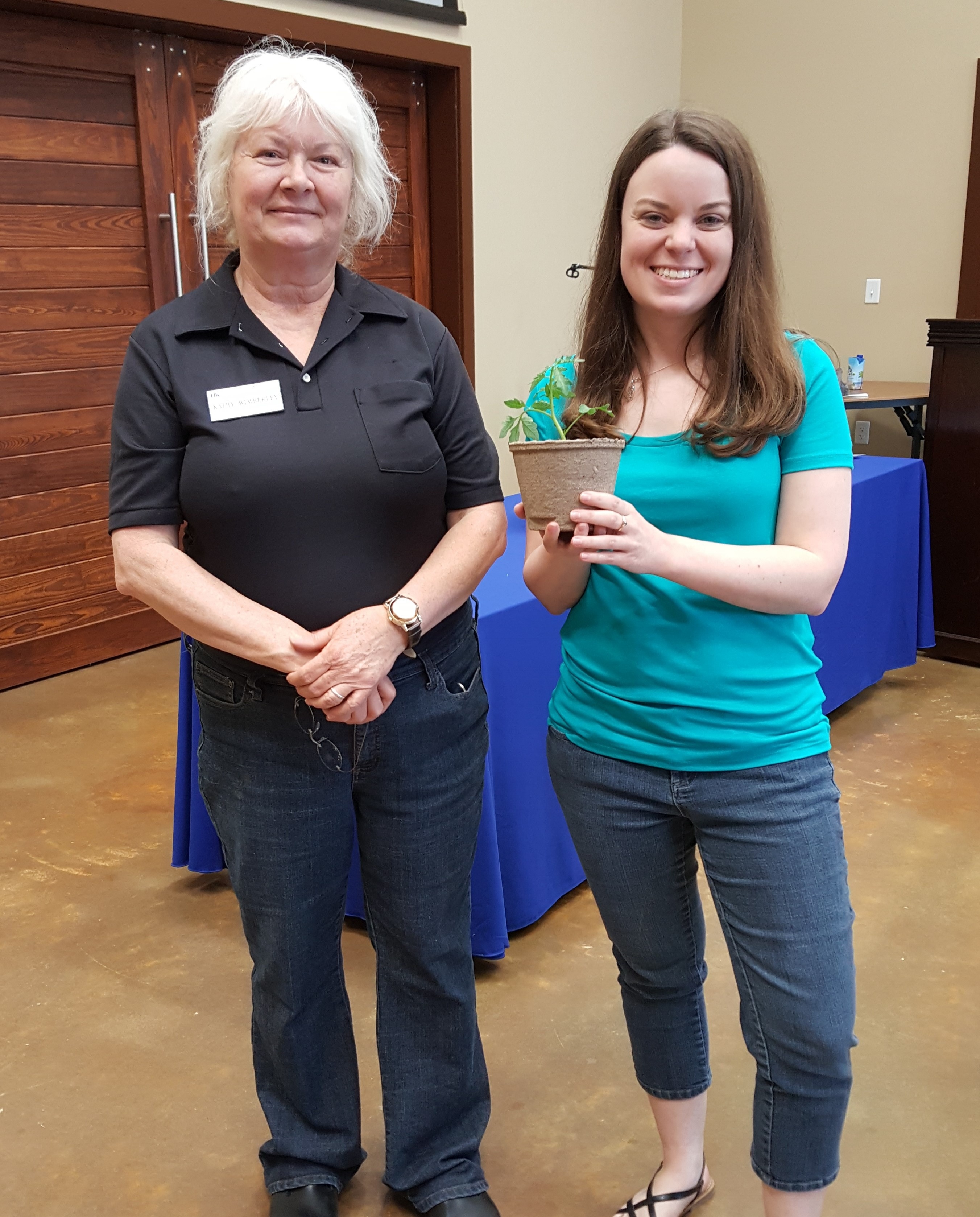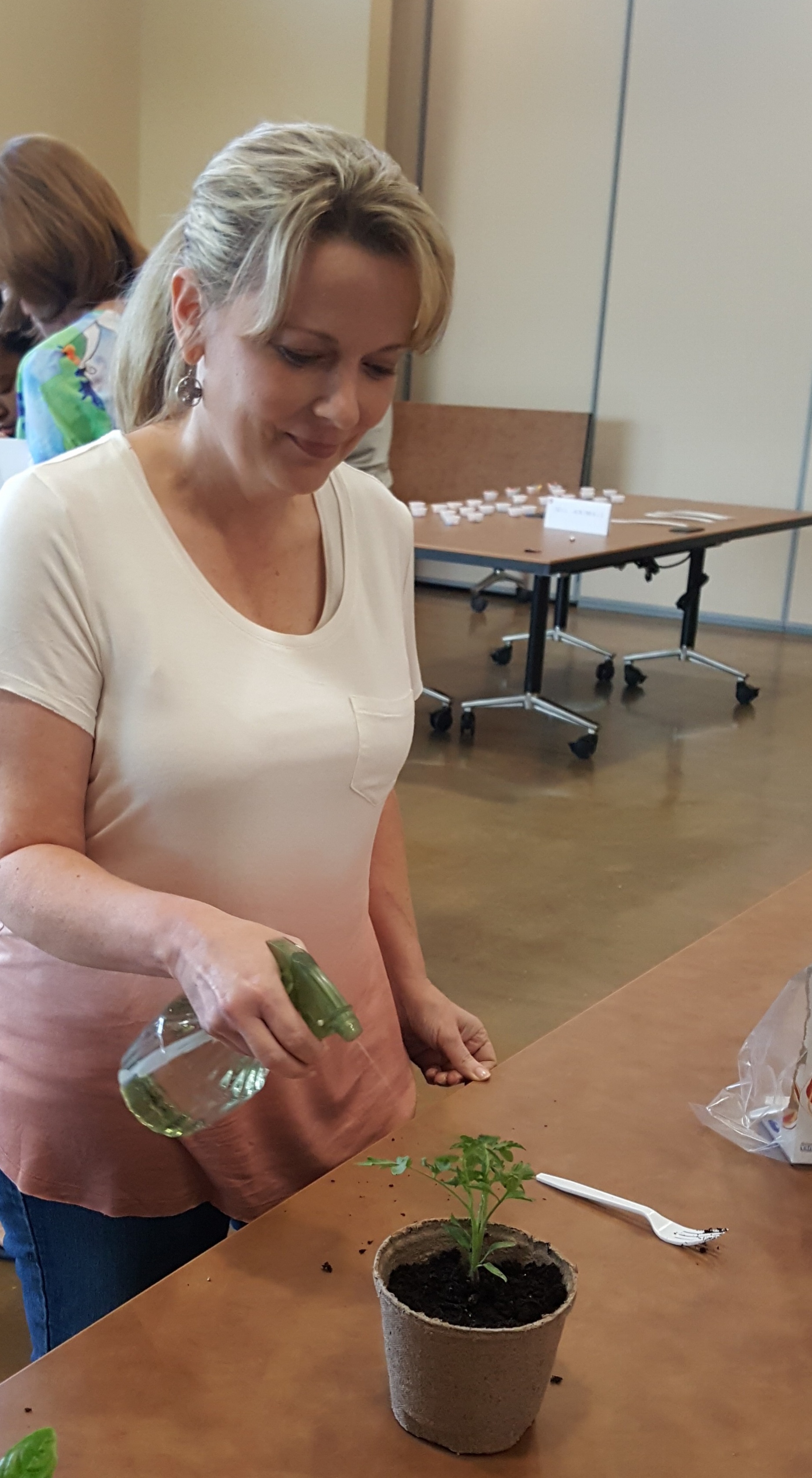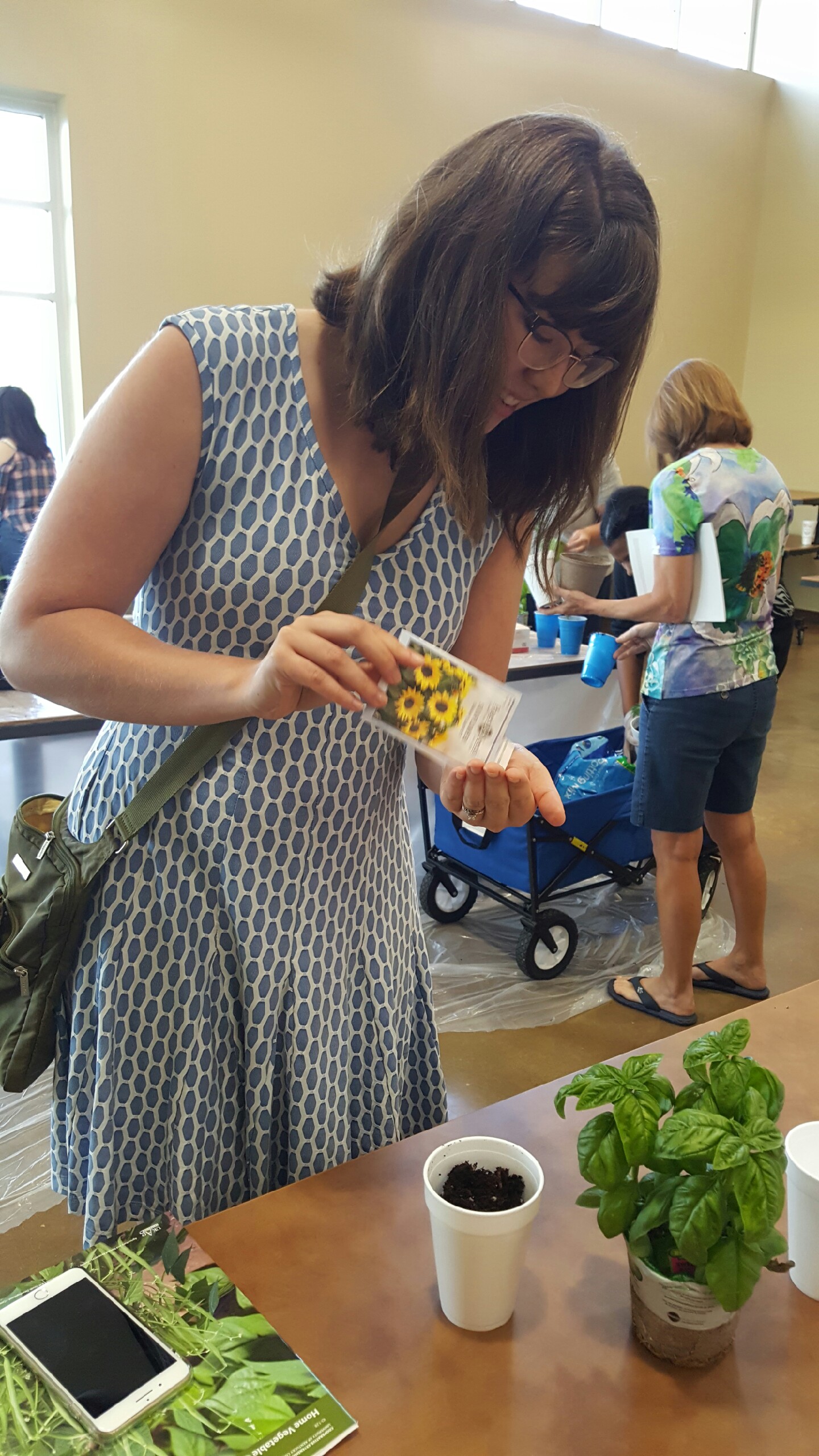Guest Post by: Catie
Catie loves to write, and try new things (and wrangling her loved ones into the process). She currently works for a marketing firm in Kentucky where she plays skee-ball, drinks hot chocolate and, oh, writes all day long.

Last week I visited our local extension office for a free container gardening class and I learned a ton!
Kathy Wimberley of the McCracken County Extension Office hosted the class that I was able to attend with a few of my coworkers. We had a great time and all left with a few FREE plants! I now have another tomato plant to add to my balcony.
If you’ve missed any of this container garden series, check out more here:
My Adventures in Container Gardening (how I got started!)
The class was great, because there were a lot of hands-on activities while we learned a lot of helpful facts and tips.
Here are a few of the highlights that Kathy talked about:
Planting:
Kathy had some other container garden options that I hadn’t thought of before:
-garlic
-radishes
-lettuce
-spinach
-carrots
-bush watermelon
-bush cucumber
-onions
-succulents
-rosemary
-lavender
-Handling your plant gently isn’t enough. This is a mistake I’ve always made! Kathy said you actually want to handle your plant by the leaves and NOT the stem. If you crush the stem when you’re watering or transplanting you can’t revive the plant, but if you damage a leaf, more leaves will grow back.
Maintaining:
Watering has some technique to it. When you plant you don’t want the water to touch the plants’ leaves. If you do, it can become a breeding ground for bacteria and disease. Also, you want to water in the morning hours for two main reasons:
-Watering them at night can encourage mold and disease.
-Watering midday, the hottest part of the day, may cause the water to dry up before it reaches the roots.
“Reach field capacity” is another term to know when you’re watering your plants. This means the soil and roots are completely saturated in water and can’t hold any more. You don’t want your plant to reach field capacity unless it is in desperate need of hydration. Otherwise you want to keep your soil moist in your containers at all times. You don’t want standing water though! If your container has standing water for too long, your roots can actually rot, because they need oxygen to keep growing.
If you think your plant is at the wilting point, or the point of no return (I’ve been here a few times in the past), then you want to reach field capacity. You can put the entire root ball in water and then let the water drain. If it hasn’t hit the wilting point, then you may have revived it.
Check the nutrients you’re adding to your soil. There are three main nutrients your plants need: Nitrogen, Phosphorus and Potassium (NPK). However, you don’t want to add much more Phosphorus if you’re planting in the ground as this can actually contaminate the groundwater.
Discovering:
 Wonder what kind of soil is in your backyard? You can find out! What you want is to find an even amount of sand, silt and clay in your soil.
Wonder what kind of soil is in your backyard? You can find out! What you want is to find an even amount of sand, silt and clay in your soil.
-Dig up a sample of your soil, mix with water (like a milkshake).
-Pour into a straight glass container and let it sit.
-A few hours later you’ll notice the different layers separating. Then you can determine which particle your soil has more of.
If your plant is leaning toward the sun, it may actually mean it needs MORE sun. Part of the plant’s cells are actually elongating so it can retain more sunlight that it needs to continue growing, causing parts of the plant to push toward the sun. So you want to make sure your plant is receiving the full attention of the sun for at least part of the day.
There is much more to the growing season than I will ever fully understand. Kathy talked a lot about the science behind the ability for each plant to grow. She also talked about how the natural freeze and thaw of the seasons is actually good for the soil. It helps renew the soil texture so it’s ready for another growing season. It increases the particle space so it allows more nutrients into the soil.
The last thing I learned is that soil animals are super tasty! ….Just kidding! To represent some of the animals that live in the soil, they had little snacks for us. Of course, I went straight for the sour worms! (I promise I’m an adult, but who doesn’t enjoy snack time?!)
All in all, it was a fun event, where we all learned something new and took home a plant that will hopefully provide some tomatoes later this summer!
Universities across the country sponsor extension offices and classes like this throughout their state and are definitely worth checking out. These offices provide education surrounding agriculture, safety, family health/development and 4-H programs. And the best part is, many of these classes are free or have a very small fee. Throughout each month they’ll have programs for children and adults of all interests.
If you’re interested in finding out more or possibly taking a class from your local extension office then choose your state below to find the closest office to your home.
And, don’t forget the perfect asset to any gardener is the right shed! If you’re still searching for a potting shed, then look into a Cook portable building! Take a virtual tour of our Cook sheds or download our buying guide below to learn more!
{{cta(‘271d4c85-b7d0-4918-b64f-b6803332d2b3’)}}
